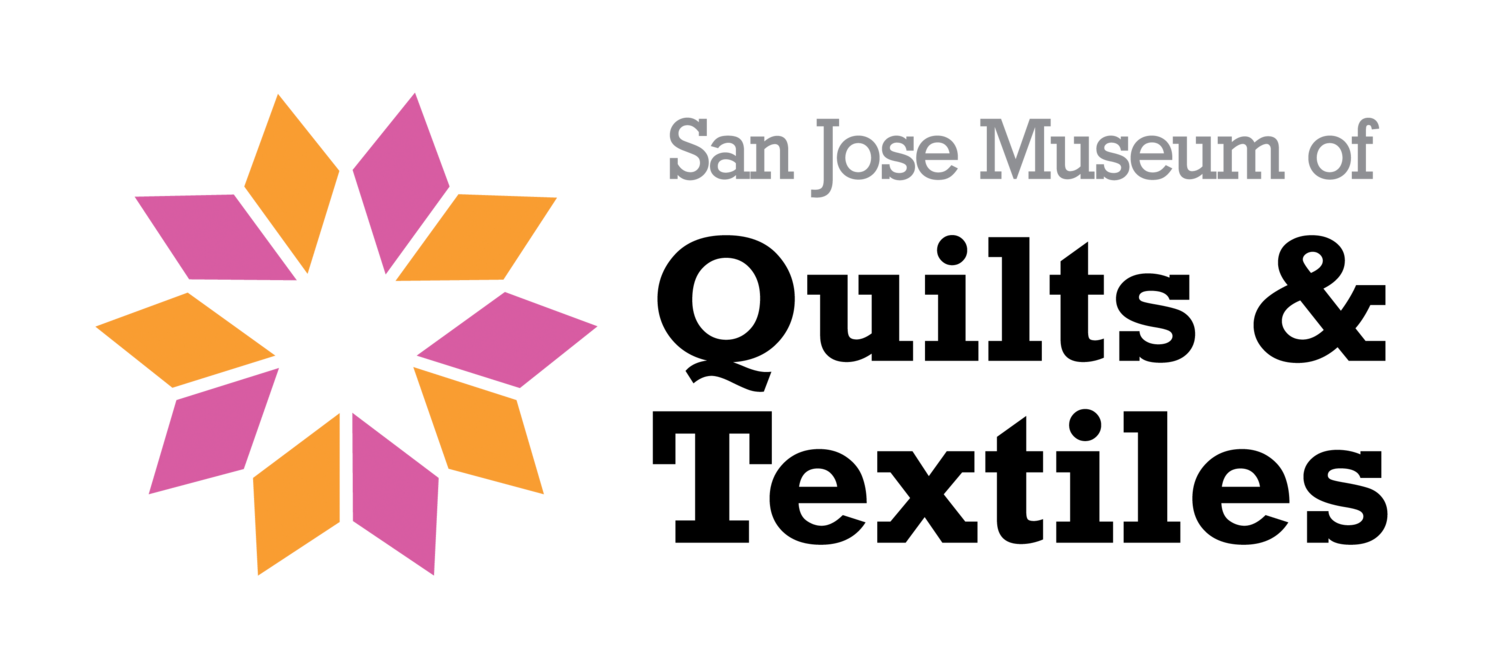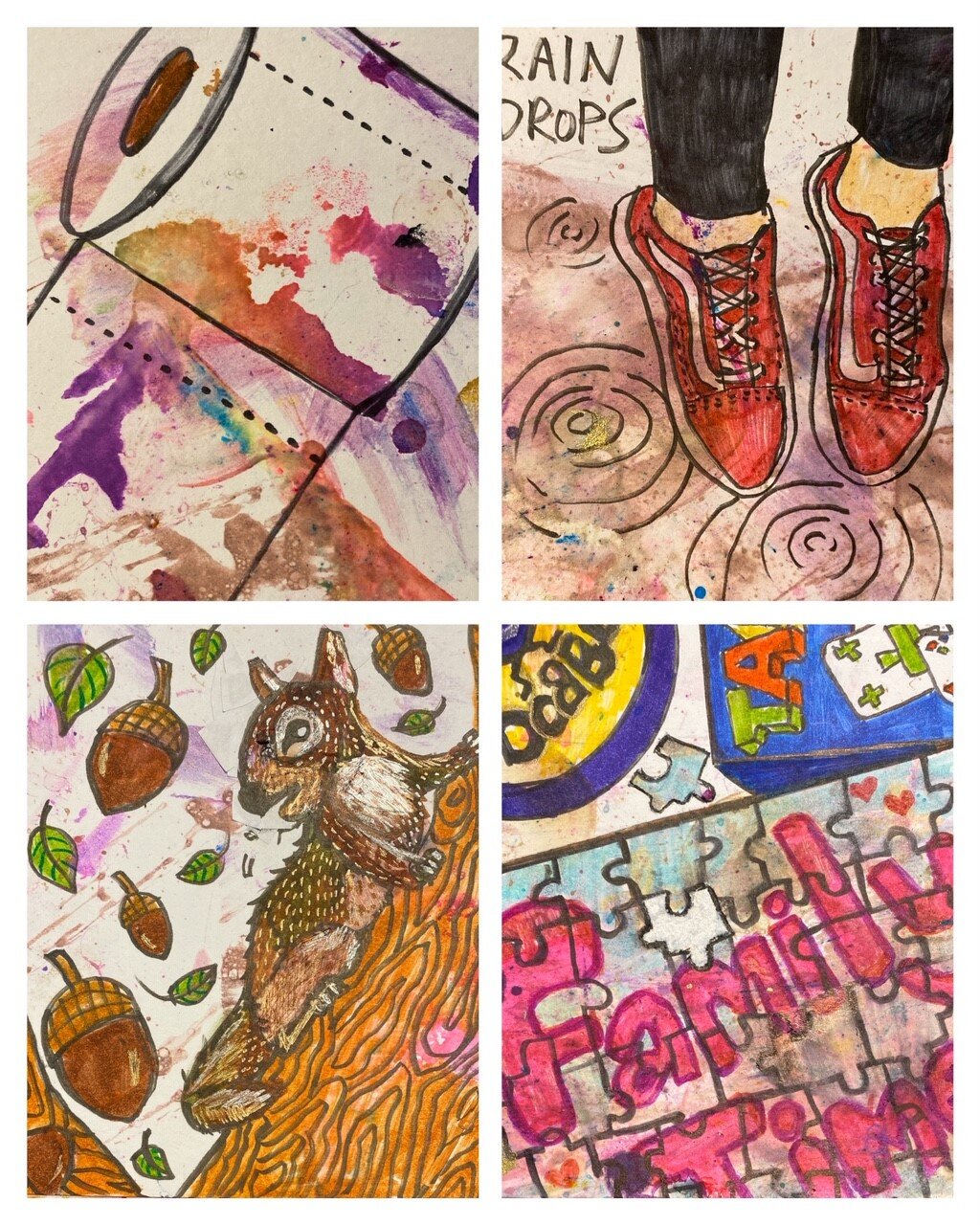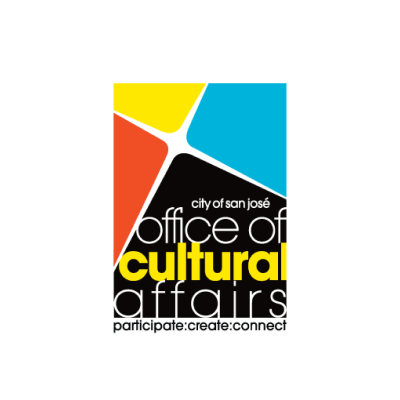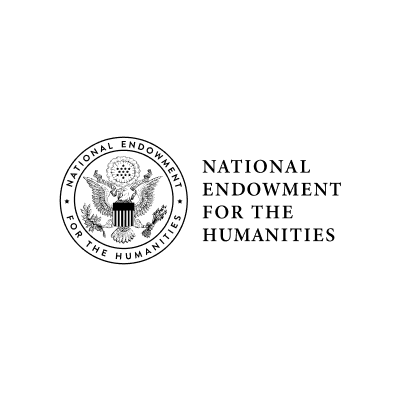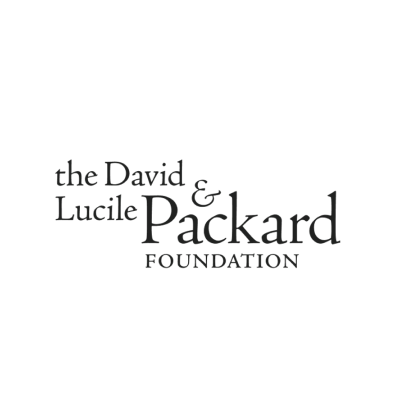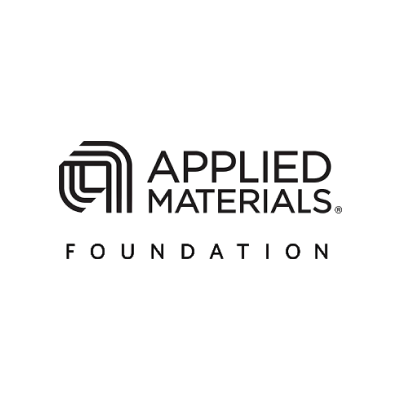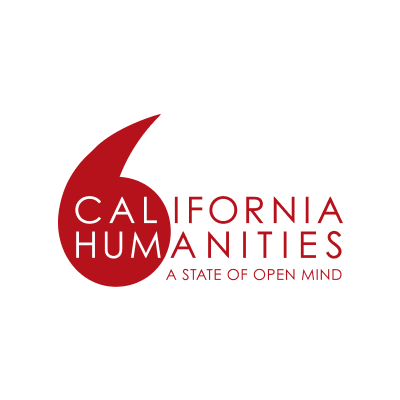Tricia Royal was the Artist in Residence at San Jose Museum of Quilts & Textiles in the Fall of 2019. During her residency the SJMQT staff would joke that Tricia’s work was an antidote to a gloomy day. Whenever we needed to brighten our moods, we’d visit the AIR hallway and see her bright, neon colors in classic quilt patterns and suddenly feel uplifted and reinvigorated. Hope this does the same for you!
What are materials and processes utilized in your body of work?
I am primarily a quiltmaker. I make art quilts that nod to the canon of traditional quilts and feature my own hand-printed and hand-painted fabrics. I have also experimented with paper the last several years and have been making a series of sewn paper quilt collages whose tessellated structure nods to traditional patchwork and quilting.
I see mark-making as an expressive, transformative act, a way to claim, reframe, and elevate a previously blank or found textile or scrap of paper. I approach the application of hand-applied geometric surface patterns on fabric or paper in a layered, iterative, and experimental manner, viscerally enjoying the inherent flow, and sense of surprise, serendipity and play. What this means in practice is that I like to sling a lot of paint around in my studio, in a mostly uncontrolled way, with lots of splattering and layering of different techniques, and revel in the wildness and improvisationality of it all. What might happen if I use this color or that technique together? Let’s find out! It’s just paper, fabric, and paint, after all!
I like to use secondhand, found or community-sourced/discarded textiles and papers in my work as much as possible. This creates a community-art based dimension to my work; I am having a curatorial conversation with and about the society in which I am a part, via the sorting, selecting and usage of the discards and detritus of my local and global neighborhood. I believe that used textiles retain value in our throwaway society. What is “useless” transforms into a valuable resource. By using these materials as the basis of my art, I hope to challenge and change minds about commonly accepted notions regarding the value of items in our material culture.
Describe the main differences of your 'old' studio to your 'Shelter in Place' studio.
My “old” studio and “shelter-in-place” studio are one in the same: I currently work in my home studio, a light-filled sunroom addition off the back of my house in Los Angeles. I also use the back half of my garage as a wet studio, where I produce the fabrics I use in my quilt work via various hand painting and printing techniques like splatter painting, relief printing, screenprinting, and monoprinting.
What are you currently reading/listening to?
Podcasts are the soundtrack to my art practice. I am and have been a big podcast junkie, and tend to listen to podcasts that focus on current events, politics, history, science, and medicine. My favorite podcasts lately have been The Daily Beans, This Podcast Will Kill You, The Episodic Table of Elements, History of the 90s, You’re Wrong About, Ologies, Sawbones, Science Vs., and Stay Tuned With Preet.
What advice would you give to other creatives at this moment in time?
Be gentle with yourself right now. A lot of my artist friends are overwhelmed and in shock given all that’s been happening right now (with illness and loss of jobs) and don’t feel like making art, or just physically or mentally cannot right now. Things are incredibly surreal, deeply weird and uncertain. Everyone I know is coping with this pandemic and its repercussions differently. Your first order of business is to just keep yourself afloat, whatever that means in your life. If you’re able to manage to do more, great. But this is not a competition, folks! Try not to get swept up by what my artist friend Nora Renick-Rinehart calls “performative quarantining”.
That said, keeping a routine and staying productive has been helping me with fear and uncertainty I have been feeling. Concentrating on my work lets my mind relax, puts me in “the zone”, and in turn, tamps down my anxiety. This was true before the pandemic, and it seems to be getting me through my days right now as well.
What drew you to the fiber art medium over others?
Fibers and fabrics have been a constant in my life, since childhood; I learned to sew when I was 11 and have never stopped. At this point it is the medium that feels the most natural, the medium over which I have the most control due to years of experience and practice.
Fibers are a constant in all of our lives, with us from the cradle to the grave, and have long been the medium to which women were restricted; my feminist leanings have cleaved me to this medium as well. I feel really strongly about textiles and fiber art and fiber artists being taken seriously as artists and as an art form, as legitimate as paint or sculpture. There’s a sense of defiance in me, a demand that fiber work not be sidelined.
What artist, who works in a different medium, informs your practice?
Sigrid Calon is a Dutch visual artist whose risograph print work I really love: her work is incredibly graphic, geometric, and intensely colorful. She uses a lot of really intense hues, including neons! I also use a lot of neon in my own prints, so her work is like catnip to me!
Words and type also mean a lot to me; I have a lot of letterpress art in my personal art collection, and I want to start working words into my fiber work more going forward. Kennedy Prints (Amos Paul Kennedy, Jr.) is a letterpress artist I really admire; he uses humor, bold type, bright colors to make statements about politics and race.
What non-art related activity do you do to invigorate your body/mind?
Before the Stay-At-Home order, I made a point to take barre and Pilates classes at least three times a week. I find that getting a little exercise is very clarifying for my mind and body. After the Stay-At-Home order came down, I downloaded a yoga app called Down Dog (which is free until at least May), and most days I try to take about a half hour to do some gentle yoga stretches. As the weeks go on, I hope to ramp up my yoga practice and want to make a point to get out for more walks in my neighborhood (6 feet away from everyone else, of course!).
What is your favorite place to look at art work on the web? In person?
I am a huge Pinterest and Instagram user, so I would say I turn to both of those to discover interesting (new-to-me) artists and art.
What are you looking forward to doing again once Shelter in Place is over?
Things I used to take for granted before, like casually going to the grocery store. I am looking forward to going out for a meal at a local restaurant (any that survive this crazy time) with my husband and daughter. Mundane, everyday things, honestly.
What is your favorite afternoon snack?
My mid-afternoon ritual, for as many years as I can remember, is a big mug of piping hot black tea with a splash of milk and turbinado sugar. I usually pair the tea with a treat from the pantry, like a small bowl of popcorn, a bowl of grapes, or a small cookie.
Anything else you would like to say or mention?
This pandemic will likely change our world in a myriad of ways, ways we cannot even fathom right now, both good and bad. Our lives will be forever changed. We have a chance to use this painful, clarifying experience to change our world for the better. We have to demand better: better leaders, better preparedness, a better, safer, kinder world for all of us.
